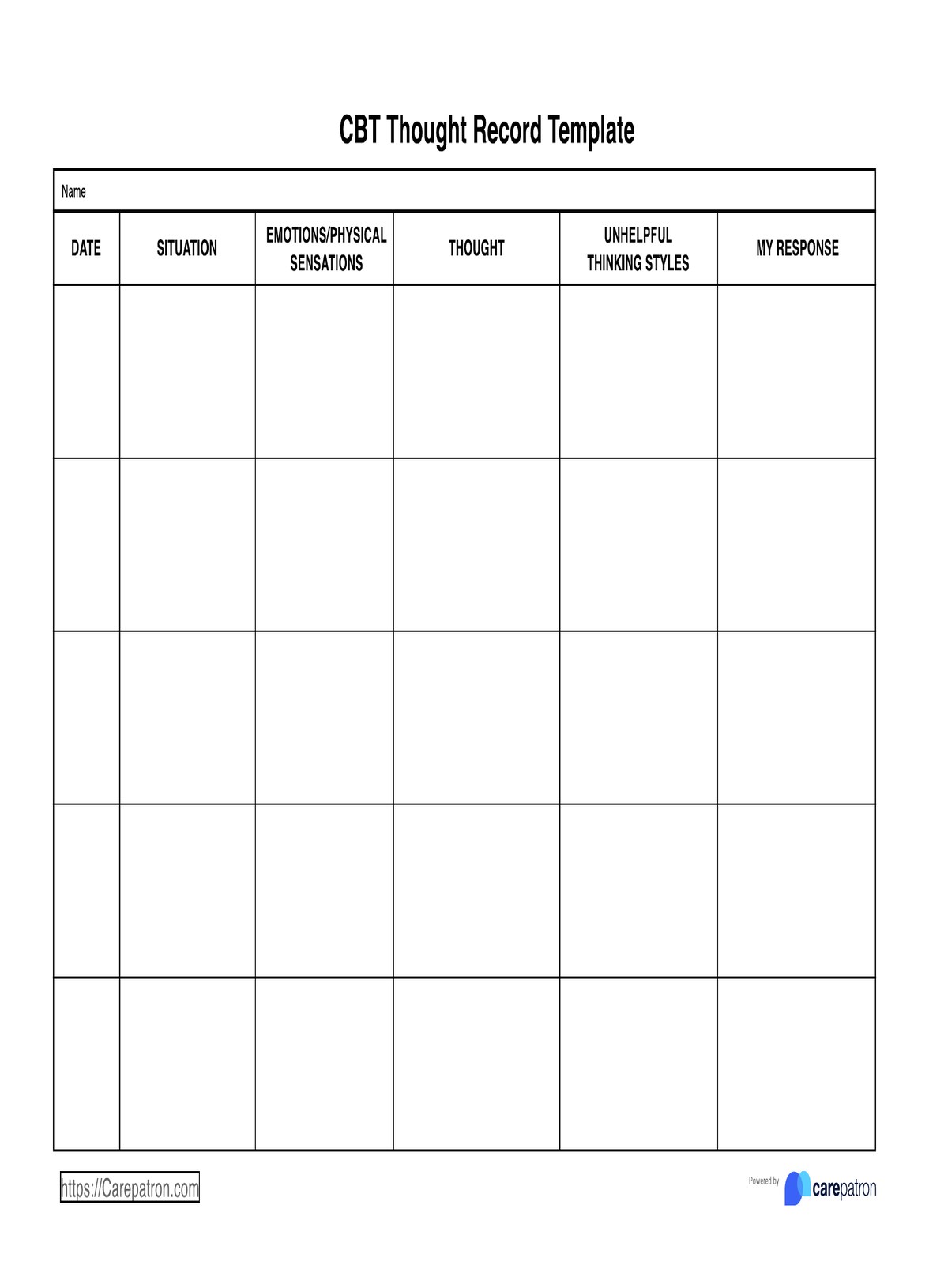We will all have more thoughts than we could ever remember in a single day. Some will be positive, some negative, and some you may not have any strong emotional connection to. This CBT Thought Record is designed to target what are referred to as “hot thoughts” or thoughts that cause some kind of physical and emotional reaction, such as distress, anxiety, or sadness. That being said, any thought could work in this thought record as long as it is a thought you want to explore further and practice analyzing.

CBT Thought Record Templates
Have a client struggling with intrusive or unhelpful thoughts but don’t know where to start? Our CBT Thought Record is a perfect jumping-off point to introduce your clients to thinking about thinking and dipping their toes into the hugely beneficial concepts of Cognitive Behavioral Therapy.
CBT Thought Record Templates Template
Commonly asked questions
This will depend on your ability to find a quiet place and a few minutes to think through each of the prompts for your CBT Thought Record entry. If you notice a thought you want to record but don’t have time to fill out the rest of the columns, just add the date and the thought, and you can come back and fill in the rest when you have time. Another approach could be to save some time in the evening to reflect on thoughts you’ve had during the day and fill out all parts of the thought record then.
There are no requirements as to who can complete a CBT Thought Record. Anyone who would like to work on exploring their thoughts, how they affect their behavior and mood, and how to counteract them can benefit from using this CBT Thought Record.
EHR and practice management software
Get started for free
*No credit card required
Free
$0/usd
Unlimited clients
Telehealth
1GB of storage
Client portal text
Automated billing and online payments











